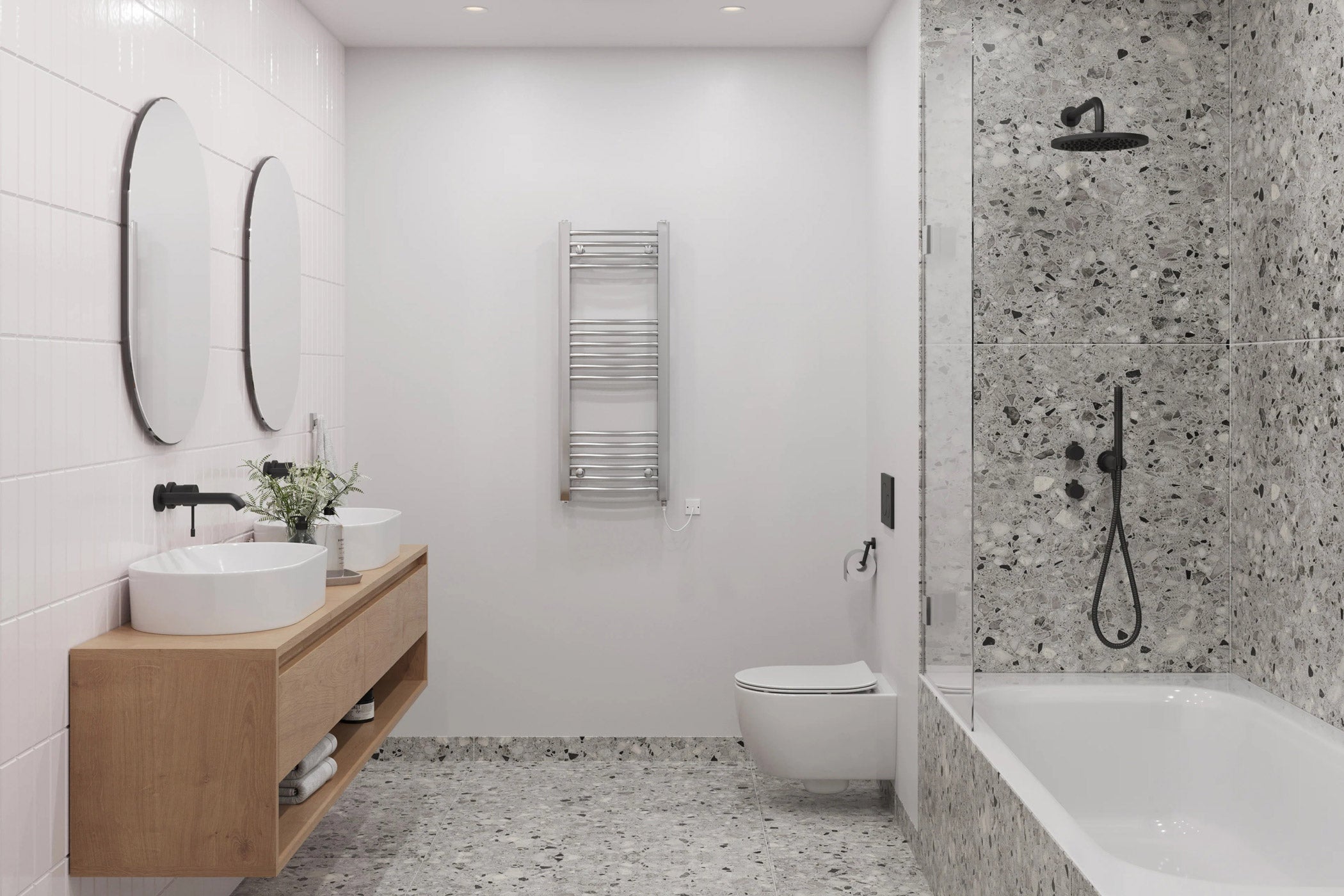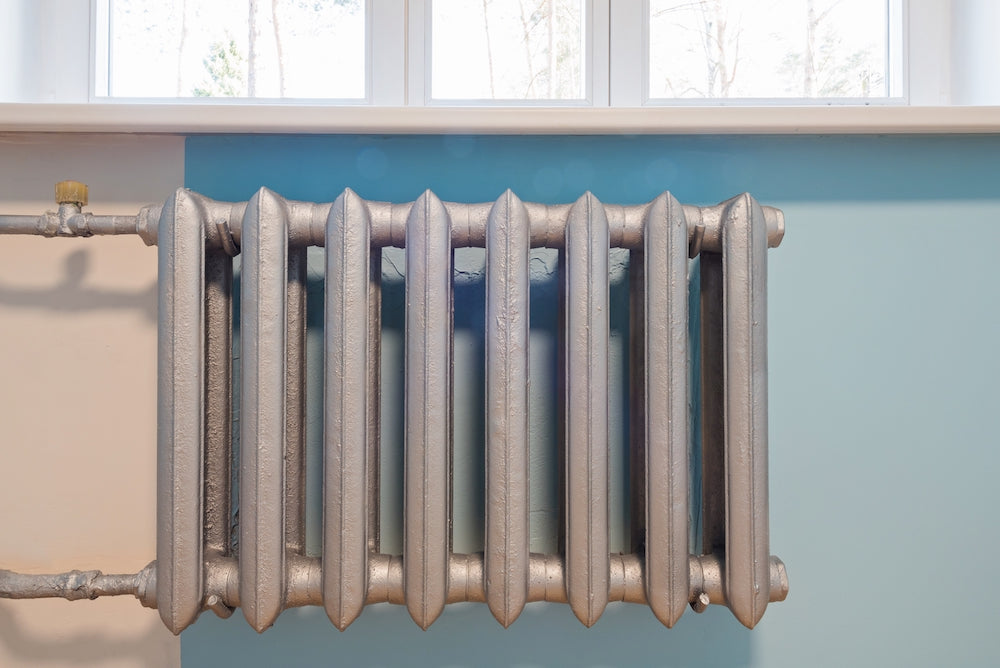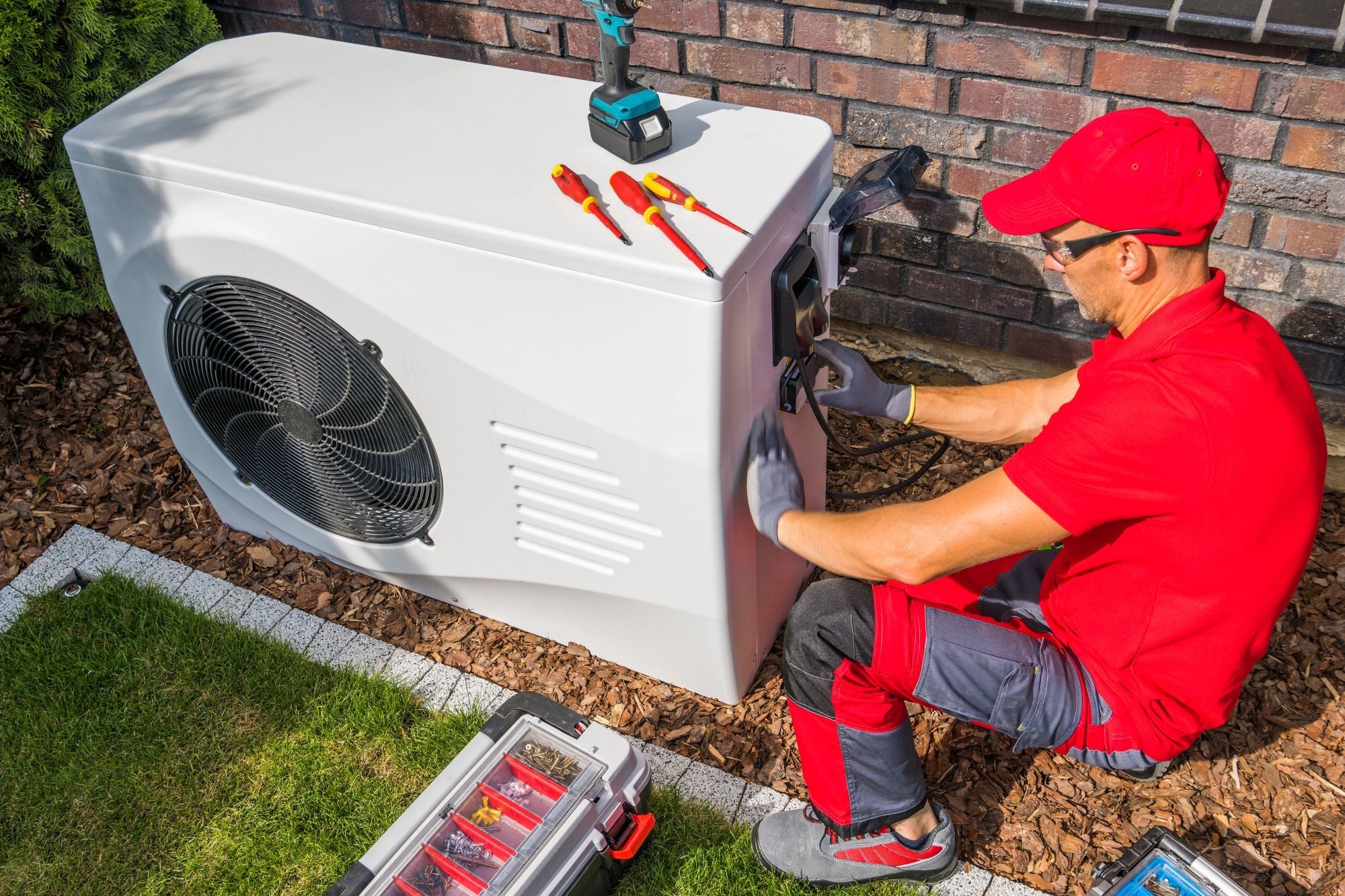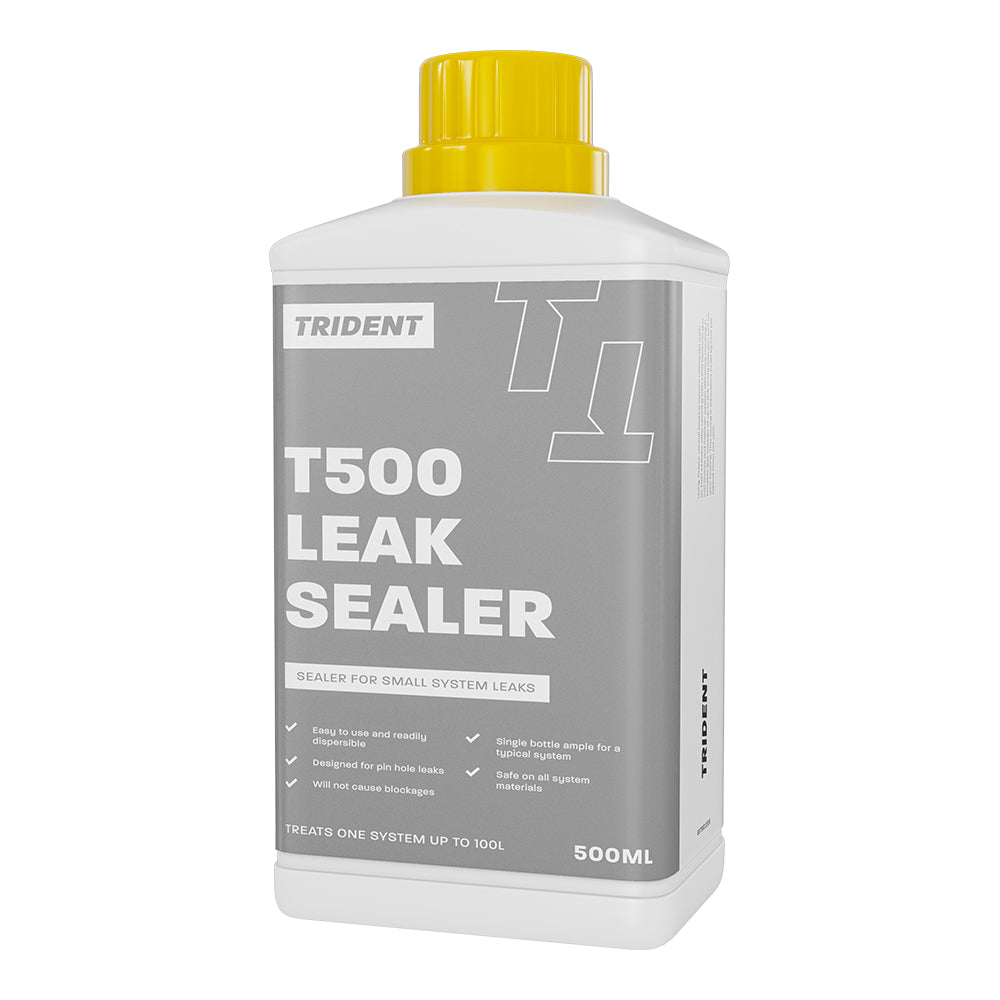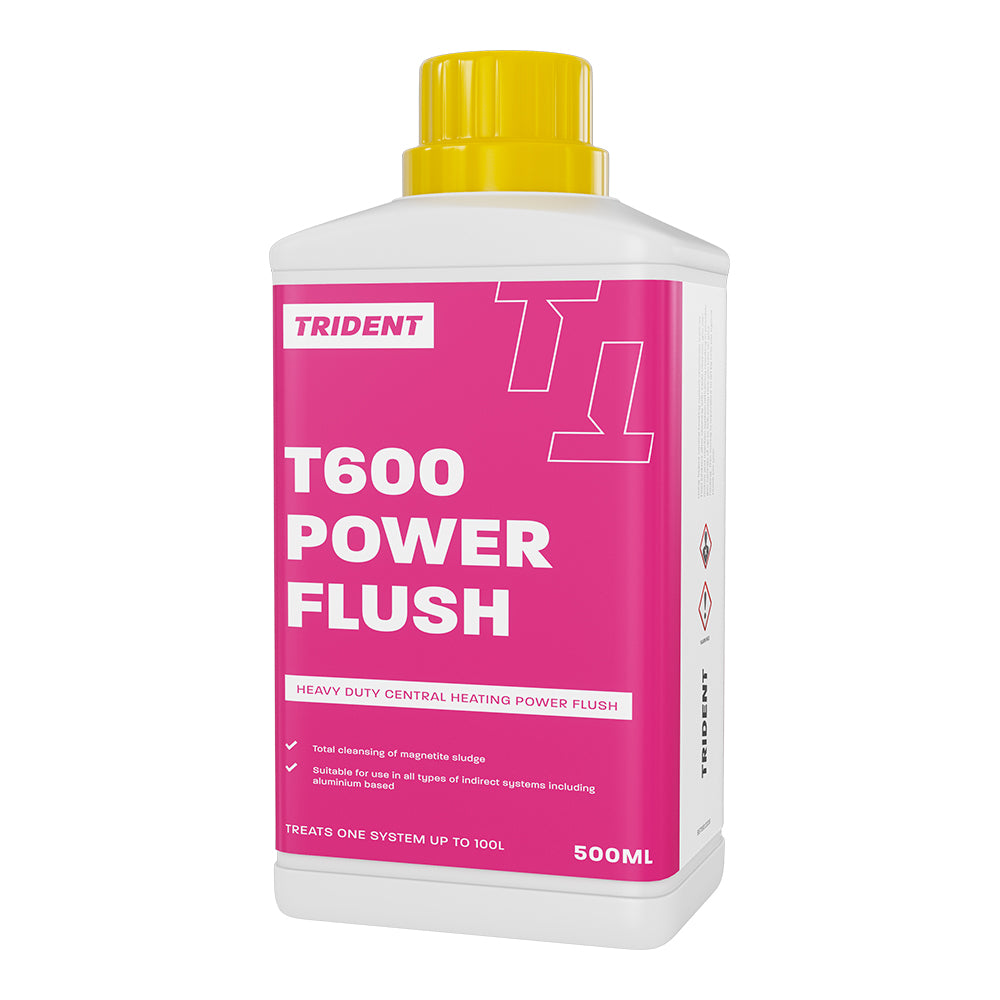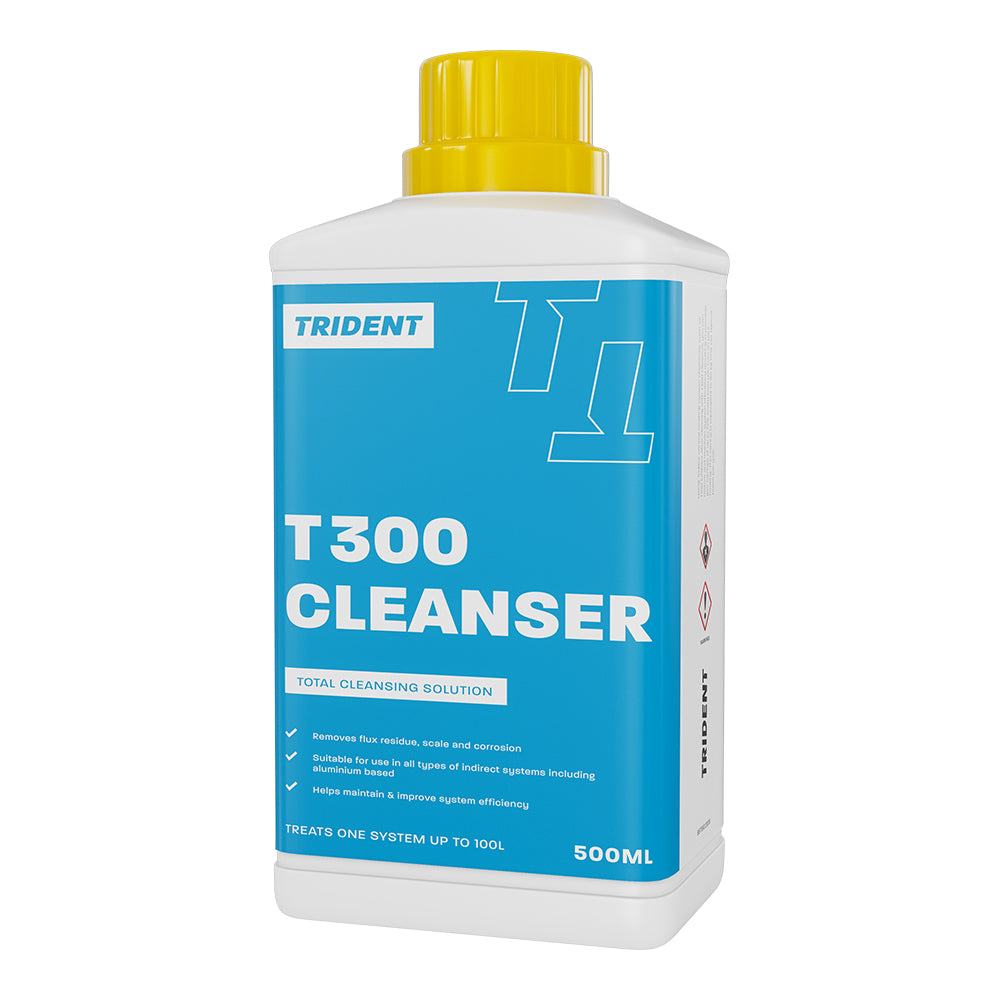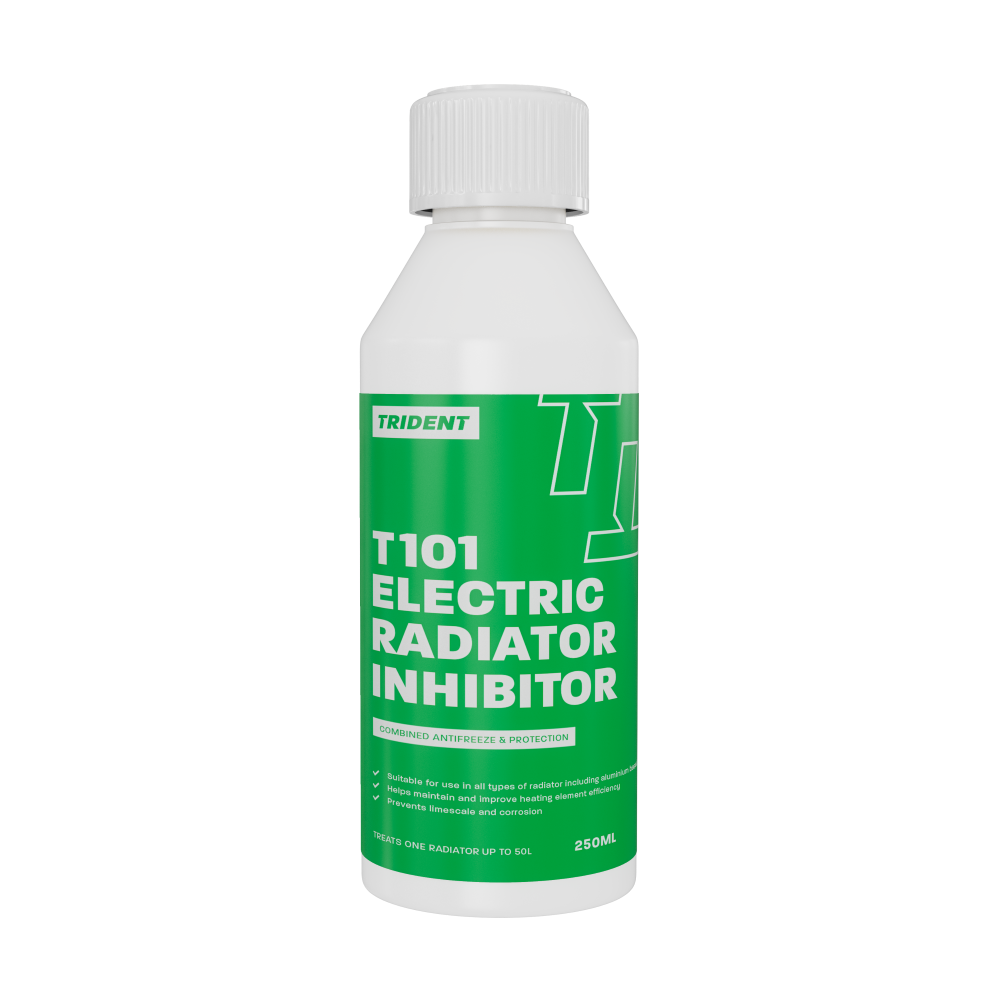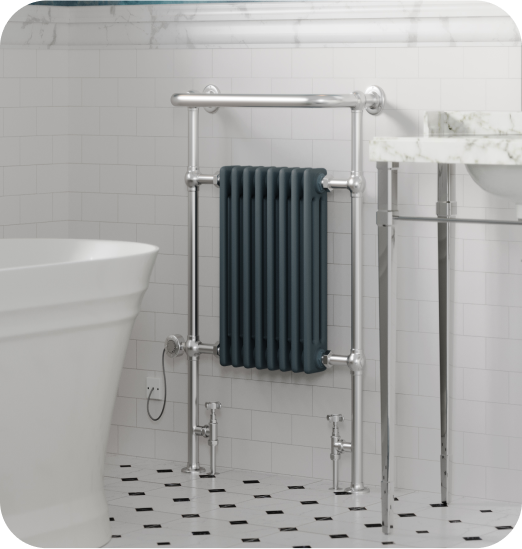
The Ultimate Guide to Radiator Materials
Now, you may come across a lot of articles around this online, but not often will you find one from a company that sells all three of the materials that we will be looking at in this blog: Mild Steel, Cast Iron and Aluminium. We have broken down the radiator materials into several categories that have an important role when deciding on the material, which are the same considerations we have when deciding what to manufacture and what to sell - trade secrets if you will! This may sound confusing, but don’t worry, we’ve included a nice table at the end for easy comparison and decision making. If you make your decision before you reach the end, just click the score in each section to see the great range of products on offer for those radiator types. Now let’s run through each category and see if we can identify logically what is the best material for a radiator.What are the most efficient radiators?
Aluminium radiators – 10/10
Steel radiators – 8/10
Cast Iron radiators – 5/10
Heating efficiency is not the same as the heat output of a radiator, and to understand why we have scored the materials this way, it is important to consider what a radiator’s job actually is. A radiator's job is not to store heat - that is the job of a building. A radiator's job is to pass the heat from the fluid inside (water) into the atmosphere around it, heating the air and creating a heating convection current in the room, which you can see in the diagram below. Aluminium radiators are brilliant at this but are often accused (especially by cast iron-only manufacturers) of only providing a ‘quick blast of heat’ which isn’t at all how it works, but we will cover that more in the environmental and running costs sections. Cast Iron radiators, unfortunately, retain a lot of their heat, which means they don’t provide heat in a room in an efficient manner. They also take a long time to heat up in the first instance, so unfortunately unless you have cast iron radiators in every room (which has a significant cost implication that we’ll come onto later), having only one means there is a good chance that it won’t get the opportunity to heat up efficiently before the temperature in the main boiler thermostat room is triggered, telling the boiler to turn off. In simple terms, to be a good radiator, you need to be a good thermal conductor and not a good thermal insulator, and cast iron radiators are good thermal insulators. Mild steel radiators can also be argued as being a thermal insulator, especially when compared to aluminium radiators, but due to the malleability of steel and the ease of application in different design shapes, it easily regains efficiency; such as with the application of fins added to the back of a panel for convector radiators.
Aluminium radiators are brilliant at this but are often accused (especially by cast iron-only manufacturers) of only providing a ‘quick blast of heat’ which isn’t at all how it works, but we will cover that more in the environmental and running costs sections. Cast Iron radiators, unfortunately, retain a lot of their heat, which means they don’t provide heat in a room in an efficient manner. They also take a long time to heat up in the first instance, so unfortunately unless you have cast iron radiators in every room (which has a significant cost implication that we’ll come onto later), having only one means there is a good chance that it won’t get the opportunity to heat up efficiently before the temperature in the main boiler thermostat room is triggered, telling the boiler to turn off. In simple terms, to be a good radiator, you need to be a good thermal conductor and not a good thermal insulator, and cast iron radiators are good thermal insulators. Mild steel radiators can also be argued as being a thermal insulator, especially when compared to aluminium radiators, but due to the malleability of steel and the ease of application in different design shapes, it easily regains efficiency; such as with the application of fins added to the back of a panel for convector radiators. 
So, what are the most efficient radiators?
For the different radiator types and materials on the market, aluminium radiators are proven to be the best in this element, so we gave it a 10/10. We then deducted points from the other materials based on:- How much heat they retain
- How long they take to heat up
This is because both impact the environment, cost of running and the length of time the boiler has to be on, and therefore efficiency. We then gave points back based on simple design changes. Why do we say Cast Iron is a thermal insulator while others will say it is a great thermal conductor? You may come across this statement online from other manufacturers “cast iron is a great thermal conductor”, it is a paraphrased statement from ISO 10809-1:2009 (the official stuff), which is talking about how Gray Cast Iron (what radiators are made out of) is better than other cast irons for thermal conductivity. An excerpt of what is actually stated is below.
 To put that into context, cast iron radiators have a score of 36-53 W(m.k) for thermal conductivity, while aluminium radiators are 150-250 W(m.k). Another way of looking at that is, Gray Cast Iron is the best of a bad choice when it comes to thermal conductivity and how we need radiators to work with our home.
To put that into context, cast iron radiators have a score of 36-53 W(m.k) for thermal conductivity, while aluminium radiators are 150-250 W(m.k). Another way of looking at that is, Gray Cast Iron is the best of a bad choice when it comes to thermal conductivity and how we need radiators to work with our home.
What are the best radiators for heat output?
Aluminium radiators – 10/10
Steel radiators – 8/10
Cast Iron radiators – 7/10
Heat output is essentially based on water content and the size of the radiator in the room vs how much heat it can output. If you were to place three radiators of each material next to each other, which have the same heat output, you would find that the size of the radiator goes from smallest to largest: aluminium, steel then cast iron. So aluminium radiators are considered a super conductor for heat, which means that less hot water is required, and therefore a smaller radiator is required to produce a high heat output. Steel and Cast Iron radiators in this area are about the same on similar designs, but cast Iron is only the same as steel where every radiator in the home is cast iron, otherwise as we mentioned in the previous section, it will not get time to do its job. However, given the range of steel designs that can make better use of the hot water and space available in the room (like the fins example from the previous section), you will find that steel radiators also have a higher heat output than cast iron radiators when we consider the water and space requirements, such as doing something simple like adding fins to the design.So, what are the best radiators for heat output?
For the materials on the market, aluminium radiators are proven to be the best in this element, so they were given a strong 10/10. We then deducted points from the other materials based on the additional size and water content required to do the same job.For cheap radiators, what are the best radiators?
Aluminium radiators – 7/10
Steel radiators – 10/10
Cast Iron radiators – 4/10
Cheap cast iron radiators are unfortunately an oxymoron, and there are two reasons why this is the case. Generally, there are 2 main styles of cast iron radiators. There is a style that is unique to cast iron, where patterns are applied to the metal, but these are very expensive. The other type of cast iron, where no patterns are applied, looks exactly the same as the steel counterparts (or in some cases, not as nice a designer finish) but costs more. Aluminium radiators are currently more expensive than steel ones, but they have their own cost benefits that we look at in the next section.So, what are the best radiators for cost effectiveness?
For the materials on the market, Steel (or mild steel as it is technically known) is not only the cheapest of radiator types available, but for the benefits it offers, such as:- Panel radiators under £50 being more than suitable for almost any room out there regarding heat output and heating efficiency
- Being available in a huge range of designer options at an affordable price, it easily got 10/10.
What Radiator Material has the lowest running cost?
Aluminium radiators – 10/10
Steel radiators – 7/10
Cast Iron radiators – 4/10
Running cost is essentially how long your heating system has to be on to produce the heat needed for your home. We first have to consider the heating efficiency of the radiator material (which we mentioned earlier), where we established that cast iron radiators are a good thermal insulator and not a good thermal conductor, the opposite of what we want a radiator to do. Therefore, it is more expensive to run cast iron radiators as their retaining heat is a bad thing, and more energy is required to punch through the thermal insulation properties. And more energy required = bigger bills. Like we said previously, it is your building's job to retain heat, so the insulation you install is a thermal insulator. Now, imagine if it were a thermal conductor? It would mean that it would be helping heat leave your home and into the outside world. So, if a radiator is a thermal insulator, it is preventing heat from leaving the radiator and entering your home. Therefore, our home should be a thermal insulator, and our radiators should be thermal conductors. The way we understand this in the practical world is, we have to think about how we use a heating system, which is based on “the anticipation of being cold”. So let us take a hypothetical situation. Our thermostat (little box on the wall) that controls the temperature of our house is set to 18 degrees celsius. You work during the day and let’s say you arrive home at 18:00 in the evening. You don’t want to walk into a cold house, so you program your heating to come on before you arrive so you walk into a nice toasty home. How long you have to heat your home before you use the heat directly impacts the cost of running it. The other consideration is when the boiler goes off as your home has reached 18 degrees, as the heat drops below that number, how long does it take to heat the radiators and your home back up to 18 degrees? Again, aluminium radiators win hands down, and while the initial purchase may cost a bit more than steel radiators (but still considerably cheaper than most cast iron radiators on the market), over time you will recover that spend and then start gaining money in your pocket. Cast iron, on the other hand, requires you to have your heating come on well in advance of the anticipation of being cold, and the only way to counteract the negatives of cast iron is by increasing the boiler water temperature, which is just a way of spending more than you need at initial purchase and running. Often you will come across terms where “a radiator retaining its heat is a good thing” as it will heat your home for longer after the heating has turned off, but when you think about this problem logically and how much bad science is involved in that statement, it simply boils down to “how much useful heating time do I get for my money?” An easy way of looking at it is with two scenarios where we say we come home at 18:00 and we can afford our heating to be on for 4 hours with different radiator types:- Heating comes on at 17:00, you return home at 18:00 and the heating turns off at 21:00 (Cast Iron)
- Heating comes on at 17:45, you return home at 18:00 and the heating turns off at 21:45 (Aluminium)
So, which radiator has the lowest running cost?
We started with the score from the heating efficiency section, then again for aluminium radiators, as it requires the heating to be on a lot less time, we gave them a 10/10. We then deducted points from the heating efficiency score based on how long you have to run the heating in anticipation of being cold, or in most people’s case, how long you have to heat an empty home to walk into a warm one after work.What did we base the heating times above on?
Cast iron and its types have a thermal conductivity rating of somewhere between 36 and 53 W/(m.K), while aluminium and its alloys have a range of about 150-250 W/(m.k). So in the real world, while you have to play about with the times on your heating system to hit the sweet spot, the difference between the two materials is clear, with aluminium radiators doing their job 4-5 times faster than cast iron ones. Steel radiators fall somewhere in between the two, based on their thermal conductivity rating coupled with the design benefits such as fins and design on surface area to volume ratio, for how long it would take to effectively heat up an area.What radiator types have the best designer options?
Aluminium radiators – 8/10
Steel radiators – 10/10
Cast Iron radiators – 5/10
Design is obviously a factor when it comes to choosing a radiator, as we all have our different styles and unique home décor to compliment. Each material offers different design options, and some better than others, so depending on the material you want, here’s what you can expect design-wise from it.If you’re after steel radiators
Steel hands down has the widest choice as its malleability and cost to manufacture gives it so much more flexibility when it comes to design. You can find pretty much any radiator colour, orientation, size and style in steel radiators, from a traditional white horizontal radiator to a modern anthracite vertical radiator. 

If you want aluminium radiators
When it comes to aluminium designer radiators, you will find that they have most of what steel has to offer, with sleek styles such as the Thetford horizontal black rad. However, there are a few designs that aren’t quite there yet in the world of aluminium designer radiators, which is why it doesn’t quite get the high rating of steel.For those looking for cast iron radiators
Cast iron radiators come generally in two forms: patterned and unpatterned. Patterned designs are unique to cast iron (like this Oxford number) but as you can see at quite the cost. The other plain, unpatterned form doesn’t have any of the moulds or shapes, and we don’t stock it as it is available in a more efficient steel version for a fraction of the cost with all the benefits of steel. The reason why cast iron radiators score so low is that while they have something that is unique to that material (the patterns in the metal), the choice available for that material is so limited and costly that unless you have your heart set on that particular design, you are better off shopping around for steel or aluminium radiators.So, what are the best radiators for variety in design?
Steel has the most flexibility in design, so we gave that a 10/10. We then started reducing points on other materials based on a whole host of design choices that may or may not be available, some examples were:- Column designs
- Unique design options
- Colour options
- Tubular designs
- Modern and traditional towel rails
- Built in mirrors
- Orientations (vertical/horizontal)
What radiator types have the most size and shape choices?
Aluminium radiators – 10/10
Steel radiators – 10/10
Cast iron radiators – 5/10
When we talk about size and shape choices, we’re referring to whether different radiator types are available in a good enough range of size and shape choices to fit into your space. Whilst some materials like steel and aluminium radiators are super versatile and readily available in vertical and horizontal orientations and a range of sizes, cast iron radiators don’t offer this versatility. Modern cast iron radiators are not too different from traditional cast iron radiators when it comes to the choice of size and shape, so because of the limitation of designs available, you lose the flexibility of projection into the room and the width reduction. In our opinion, we can use our logic to visualise how radiators function in the real world, where width and projection are the biggest impacts on your home. Projection is how intrusive the radiator is, so take bathrooms, which in the UK are often limited for space. You will be limited for how much space can be used by a radiator sticking out, meaning space-saving radiator types will be your go-to. The width will determine how much furniture you can have in a room, especially in a room with fixtures and appliances like a kitchen or bathroom. So ideally what you want is a slim and narrow radiator, which will still provide adequate heat without obstructing your other furniture and appliances. For this, you can look at tall narrow and slim radiators such as our Typhoon white vertical radiator.
Tall cast iron radiators don’t really exist - not in the same way as vertical aluminium designer radiators or from steel radiators which can grow in height whilst remaining tight to the wall, getting the heat output you need for the smallest amount of usable room space available. On the other hand, if you have a good bit of space under a windowsill, cast iron radiators can work, where you are looking to utilise width and projection. However, you often find less flexibility on the projection of cast iron radiators as you do with steel column radiators - which get all the benefits of the width, but more flexibility around the number of columns and projection that can be in place. Or you can get a bit further with this using a horizontal aluminium radiator, with its much higher heat output for size, it is great at maximising the width available whilst remaining flat against the wall.
So, what are the best radiators for size and space?
We scored this based on the variety and availability of controlling height, width and projection and in combination when choosing radiators, with the goal of taking up the least amount of space in a room. Due to the variety of shapes and designs of aluminium and steel radiators, it is generally always possible to find a radiator that meets your needs in all three size considerations, whilst still getting the required heat output, so these got 10/10. Cast iron radiators fall short on projection and on flexibility of mixing and matching all three dimensions, so we reduced points on failed combinations, for example, they are not flexible on height and projection i.e. taller and slimmer options are not readily available.What radiator material is best for the environment?
Aluminium radiators – 10/10
Steel radiators – 7/10
Cast iron radiators – 3/10
Environmental friendliness radiator is something that should be a strong consideration when purchasing a radiator in today’s world, where we’re all trying to reduce our carbon footprints and impact on the planet. The way a radiator can be good or bad for the environment generally comes down to how long your heating system is on, which in turn indicates how much energy is used in generating that heat. We covered most of this in the earlier sections of heating efficiency and running costs. So a smaller aluminium radiator, which requires less water to be heated, can be on for a shorter period of time (meaning the boiler is on for less time) and does not need to come on earlier to heat your home in anticipation of being cold, can be considered an environmentally friendly radiator. In addition, both steel and aluminium radiators have a significant benefit over cast iron, in a similar way to the above, as they will work much more effectively on lower temperature systems.The Future Homes Standard
The Future Homes Standard is a government environmental initiative and part of it is looking to set a standard design temperature of 55 degrees for boilers and the use of air and ground source heat pumps. We are actually doing our part, and in the feedback to the government suggesting 45 degrees as the design temperature as this is how air source heat pumps will work for most of us, but we are pushing for 35-40 degrees so it works across the country as a standard rule. With that in mind, a lower flow temperature means a longer heating up period, which in turn means that cast iron radiators are generally on their way out of an environmental future, as if it is retaining its heat and taking a long time to heat up, the benefits of future systems will be undone.Are modern radiators more efficient?
Aluminium, on the other hand, is definitely scoring high on all points, as well as being the most efficient material for the heating systems we will need to use when Gas is phased out in the future.So, what are the best radiators for the environment?
We took the average of heating efficiency and running cost, which would generally indicate how good a radiator is for the environment based on material. We then deducted points based on the practicality of using a new energy efficient low temperature solution (per the Future Homes Standard), as doing something like retaining a gas boiler to get a high enough flow temperature to use cast iron is not an environmental option. Plus, there is only so much space available in a room to counteract the lower temperature by increasing the radiator size.What is the most durable radiator material?
Aluminium radiators – 8/10
Steel radiators – 9/10
Cast iron radiators – 10/10
Durability is another important aspect of a radiator, and there are a couple of different factors that we should consider:- Strength of the material
- Corrosion of the material
- Chance of physical damage
- The environment the metal is in.
So, what is the most durable of radiator types?
Cast iron is a thicker material for radiator designs, so we started that on a 10/10. We didn't think it was fair to deduct/add points based on corrosion type as you still have to take the same steps to manage corrosion and the impact would change and be too different across the board, given geographic area/water content and heating system temperature factors.What radiator types have the longest guarantee length?
Aluminium radiators – 10/10
Steel radiators – 10/10
Cast Iron radiators – 6/10
All the science in the world doesn’t help protect you or your money, so as we mentioned above, the more important aspect of durability is demonstrated by the guarantee length. Every retailer will offer different guarantee lengths, to give you confidence in the product whilst having a fair estimate for how long a product should reasonably last. All of our painted Steel and Aluminium radiators that are manufactured by UK Radiators have a 15-year guarantee. The paint helps protect from external durability issues, and the manufacturing process and materials used help us protect from internal durability issues, along with the use of an appropriate inhibitor on the system as a whole. For cast iron radiators, both the ones we sell and the ones out on the market you can find generally offer an 8-10 year guarantee period, at least at the time of writing (this is supplier dependent). So the proof is in the pudding as they say, if cast iron radiators were so much more durable, then you would expect them to have a much longer guarantee period than steel and aluminium radiatorsSo, which are the best radiators for guarantee length?.
Aluminium and steel radiators, at least from our book of products, have the highest guarantee length of 15 years so they scored 10/10. We then divided 10 by 15 (number of years for steel and aluminium) then multiplied it by 9 (number of years for cast iron) to get the result for cast iron.So what is the Best Material for a radiator?
Aluminium radiators – 9.2/10
Steel radiators – 8.8/10
Cast Iron radiators – 5.4/10
So, here are the final scores for each radiator material, which we worked out simply averaging out all of the scores from the previous 9 sections. When we consider all things together, as it stands today, we have a close call between steel and aluminium radiators, but we anticipate this changing in the future more in the favour of aluminium. But before we go into the future, let’s look at the past and consider why cast iron is the worst radiator material today.Cast iron radiators: best left in the past
When it comes to cast iron radiators, while they had been used as the go-to radiator for a long time, times change and technology evolves, so while it is sad to see them go, the traditional cast iron radiator has been moving out of the way for some time for more modern and efficient designs and materials. Unlike aluminium radiators, cast iron ones were never introduced for their benefits as a functional radiator. Originally, radiators were of a steel design, but due to the cost and complexity of manufacturing, the cheaper alternative of cast iron was adopted. As steel became easier to manufacture, along with the natural benefits it offered, there is no real question of why steel is a better material for radiators than cast iron.The future of radiators is aluminium
The future of radiators which we will see in the coming years is aluminium extending its lead over steel - and looking at our analysis, the only areas where steel really outshines aluminium right now is the initial purchase cost and the designer choices available for that material. However, as more and more aluminium radiators are sold in the market, we will see this change as the cost of manufacturing naturally comes down. Then there are the extra benefits of aluminium on upcoming low temperature heating systems (ground source heat pumps and air source heat pumps), so in the coming years we may see steel officially make way for aluminium in the same way that cast iron went to the back bench for steel. So we will confidently make the claim that now and in the future, aluminium is the best material for a radiator with steel currently being a close second.Summary and Recap
As promised at the start, here is the summary of all the sections and their scores. 
We hope this will help you when you’re choosing your next radiators. If you are looking for a radiator with either a budget or a specific design preference, maybe start with steel radiators, as you still get some of the benefits that aluminium radiators offer, but with a bit more choice and flexibility on the price and designer preferences. If however, you are looking for something that will work on a low temperature solution or you have the environment in mind and don’t mind paying a bit more upfront at first to help Mother Nature, then it could be an idea to start with aluminium radiators. Finally, if you really had your heart set on Cast Iron, we have a smaller range here of what is unique to cast iron radiators, but as mentioned before, if you want a design or style outside of this for cast iron or a design with the same appeal, look to our steel column radiators for an up to date version. For cast iron inspired steel radiators, we’ve put together some options below that act as great replacements for wall mounted cast iron radiators and floor standing cast iron radiators.
- If you like black cast iron radiators, check out our black steel column rads.
- If you like white cast iron radiators, check out our white steel column rads.
- If you like tall cast iron radiators, check out our column rads
- If you like traditional cast iron radiators, check out our raw metal column rads.
- If you like bathroom cast iron radiators, check out our traditional towel rails.


